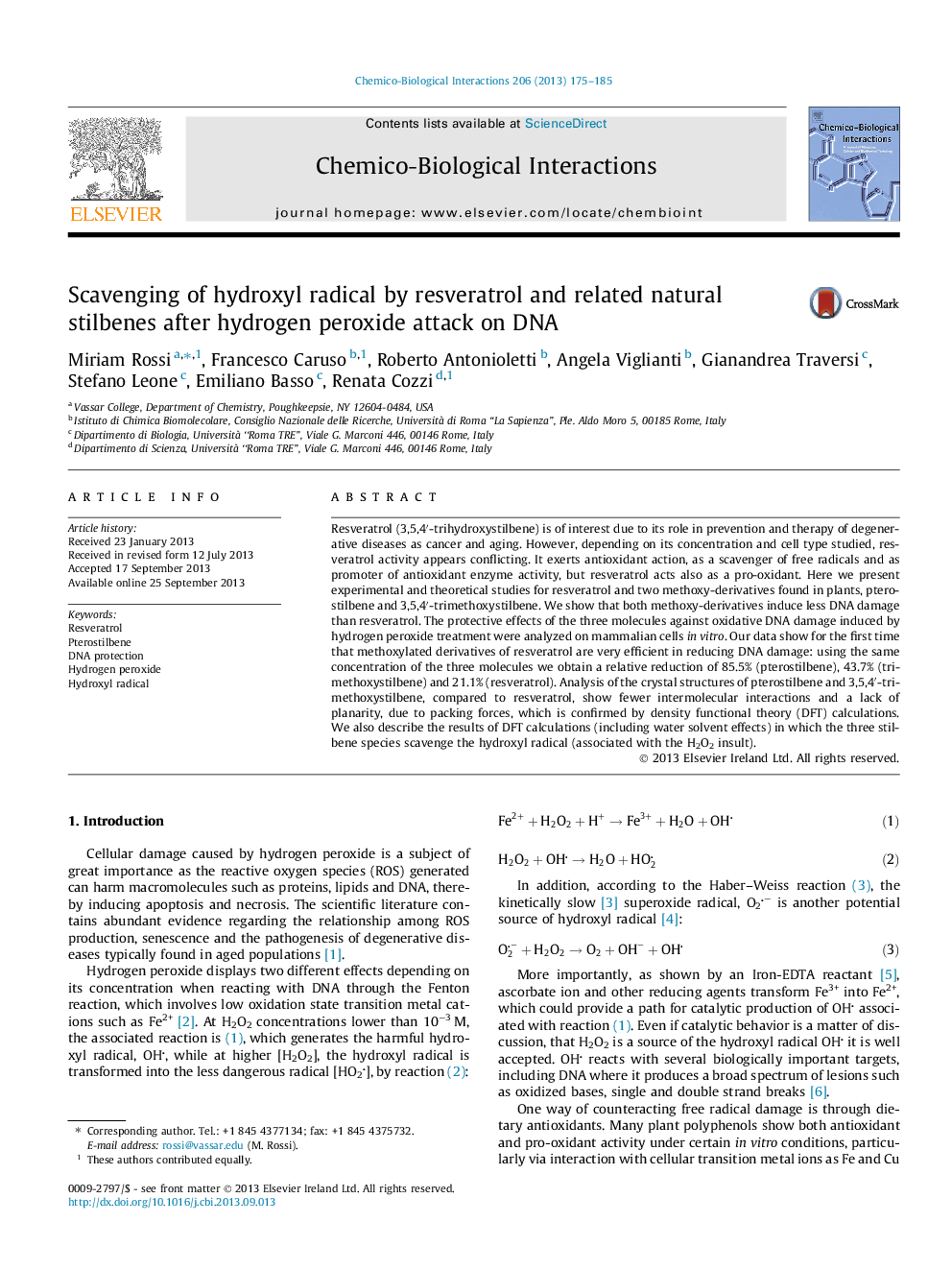| Article ID | Journal | Published Year | Pages | File Type |
|---|---|---|---|---|
| 5848099 | Chemico-Biological Interactions | 2013 | 11 Pages |
•Methoxylated resveratrol derivatives gives more DNA protection than parent compound.•After H2O2 attack, an electron transfer process is proposed for DNA protection.•Resveratrol pro-oxidant effect on DNA decreases when using methoxylated derivatives.
Resveratrol (3,5,4′-trihydroxystilbene) is of interest due to its role in prevention and therapy of degenerative diseases as cancer and aging. However, depending on its concentration and cell type studied, resveratrol activity appears conflicting. It exerts antioxidant action, as a scavenger of free radicals and as promoter of antioxidant enzyme activity, but resveratrol acts also as a pro-oxidant. Here we present experimental and theoretical studies for resveratrol and two methoxy-derivatives found in plants, pterostilbene and 3,5,4′-trimethoxystilbene. We show that both methoxy-derivatives induce less DNA damage than resveratrol. The protective effects of the three molecules against oxidative DNA damage induced by hydrogen peroxide treatment were analyzed on mammalian cells in vitro. Our data show for the first time that methoxylated derivatives of resveratrol are very efficient in reducing DNA damage: using the same concentration of the three molecules we obtain a relative reduction of 85.5% (pterostilbene), 43.7% (trimethoxystilbene) and 21.1% (resveratrol). Analysis of the crystal structures of pterostilbene and 3,5,4′-trimethoxystilbene, compared to resveratrol, show fewer intermolecular interactions and a lack of planarity, due to packing forces, which is confirmed by density functional theory (DFT) calculations. We also describe the results of DFT calculations (including water solvent effects) in which the three stilbene species scavenge the hydroxyl radical (associated with the H2O2 insult).
Graphical abstractResveratrol (top), pterostilbene (middle), 3,5,4′-trimethoxystilbene (bottom) plus DNA primary damage evaluated by Comet assay.Figure optionsDownload full-size imageDownload as PowerPoint slide
